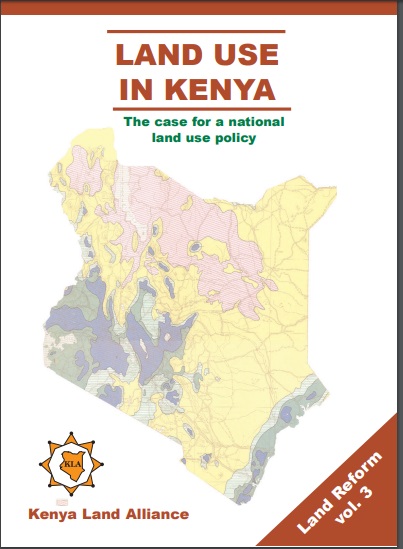Resource information
This book exposes the key land use and environmental problems facing Kenya today due to lack of an appropriate national land use policy. The publication details how the air is increasingly being polluted, the water systems are diminishing in quantity and deteriorating in quality. The desertification process threatens the land and its cover. The soils are being eroded leading to siltation of the ocean and lakes. The forests are being depleted with impunity thus destroying the water catchments. The savannas and grasslands are undergoing de-vegetation through overgrazing, charcoal burning and other poor land use practices leading to desertification. The book also reveals the underlying causes of the deterioration of the life support systems (air, water and land) through poor land use practices notably de-forestation, inappropriate irrigation techniques, overgrazing, fuel wood harvesting and charcoal burning. Others are pollution from industries, harmful agricultural practices and improper management of solid and liquid urban wastes. The ever-increasing population exerts pressure on the natural resources and drives the mis-use of the resources, the situation is exacerbated by the cyclic occurrence of disasters such as droughts and floods. The publication further exposes the emerging conflicts and the consequences of un-sustainable land use. For example the scarcity of pastures and water fuels conflicts among pastoralists and between small and large-scale irrigation farmers. Poor air and water quality increases health hazards in human beings and loss of biodiversity. Destruction of water catchments diminishes stream flow and hence electricity supply necessitating rationing. Desertificaton reduces the productivity of land leading to food insecurity, reduced income and non-accumulation of economic assets. Eventually millions of families end up living below the poverty line. Currently, over 5 million households are unable to access basic human needs such as food, medical care, and education or meet other social obligations. The book further demonstrates that the current trend of deterioration will lead to a gloomy future for the populace if the status quo is maintained. As an alternative future scenario, the publication exhorts the government of Kenya, industrialists, urban dwellers, farmers, fishermen, pastoralists, nomads, hunter/gatherers and other resource users to opt for a rational land use programme - practising wise management of natural resources and protection of the environment. Striking a balance between satisfying the human livelihood needs and wise usage of resources to ensure sustainability of the natural resource base is the biggest challenge. The book has identified the key elements that are needed in order to put in place a comprehensive and rational national Land use policy that will enable the emergence of sustainable land use practices in Kenya. The information in this publication is an analysis of published data in the public domain of Government of Kenya, international organizations and local institutions. Field data analyses and interviews with a cross-section of professionals, ordinary farmers, pastoralists, fishmongers, hunter gatherers among other respondents in some parts of Kenya provided valuable testimonies that have enriched the text.



